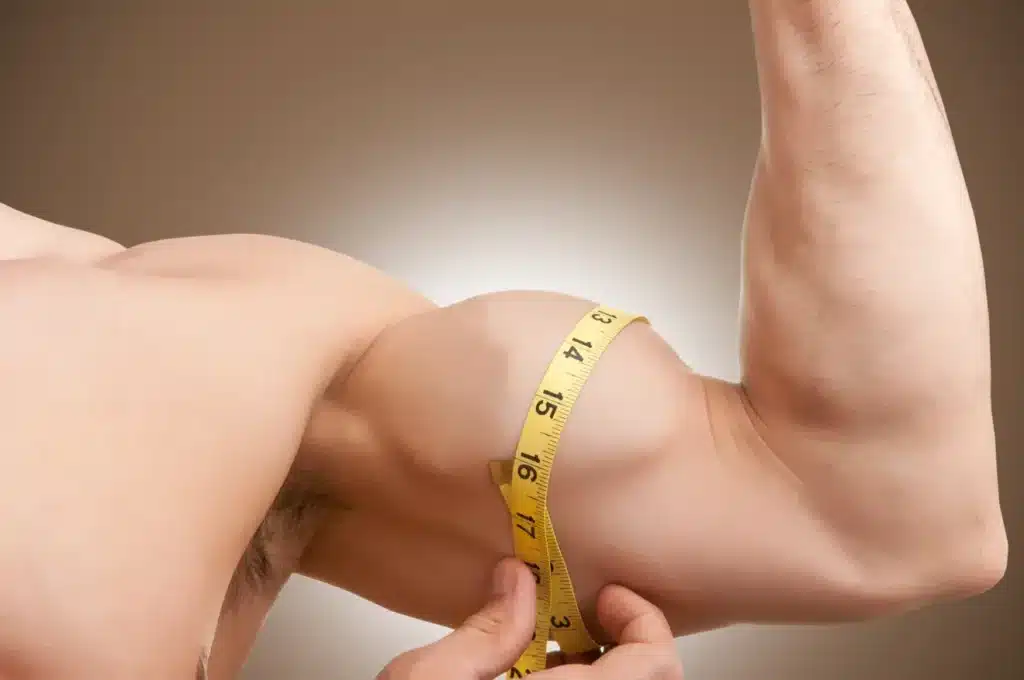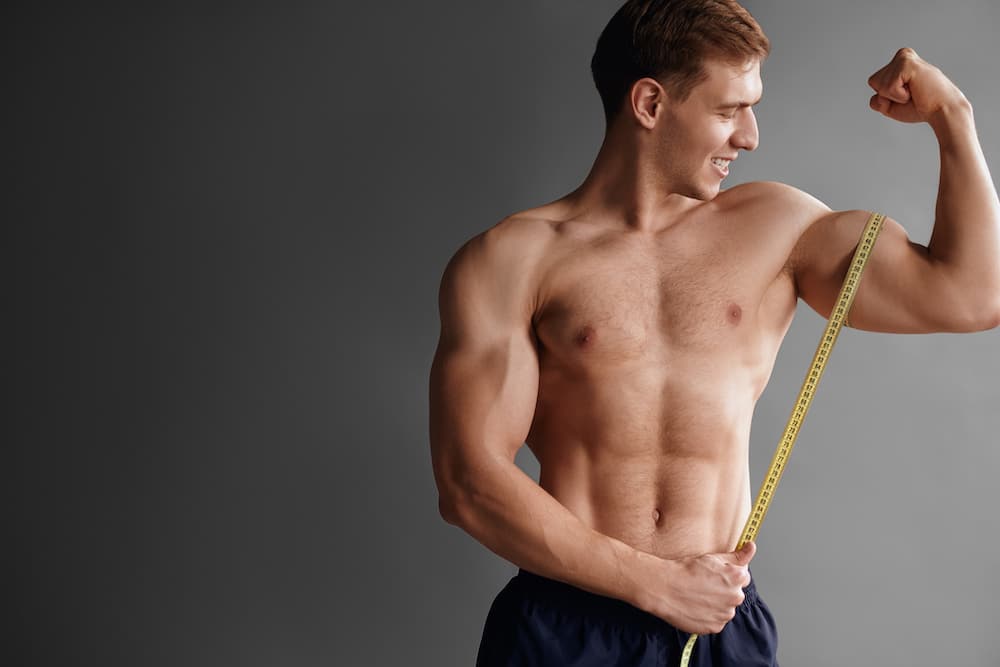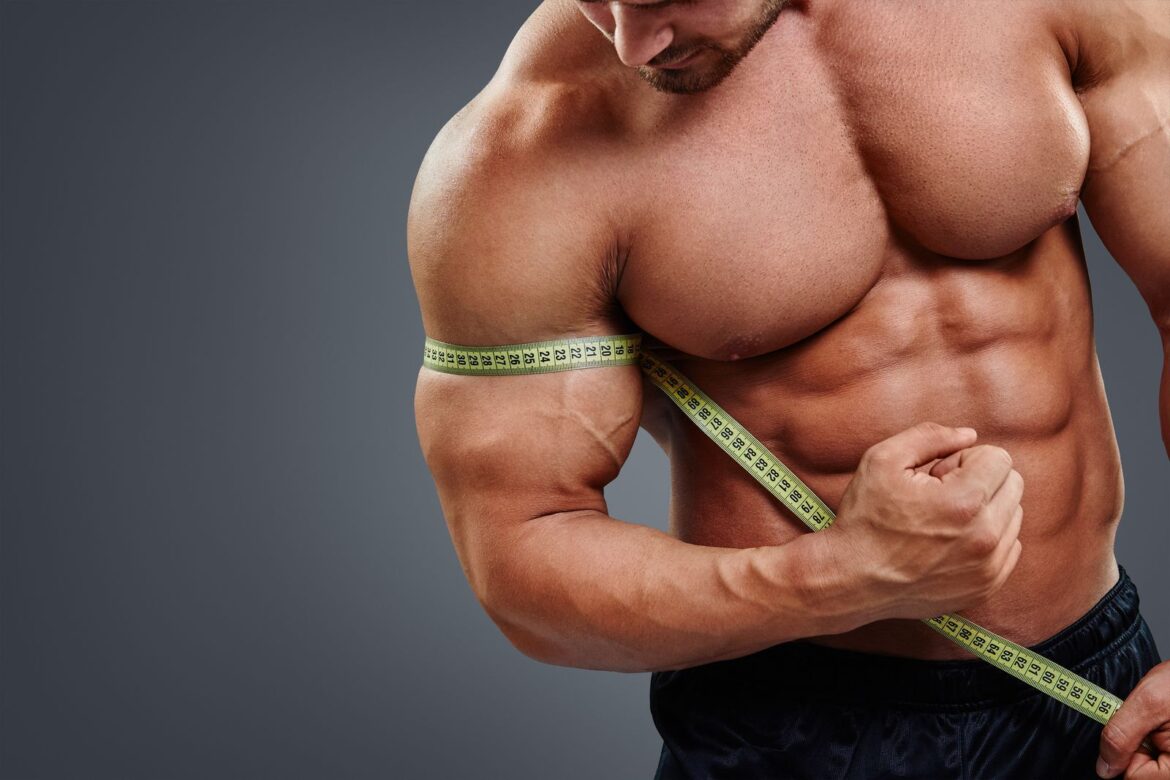Introduction
How To Measure Shoulders Bodybuilding: In the realm of bodybuilding, achieving well-defined and proportionate shoulders is a fundamental goal. Building impressive shoulder journey not only enhances your overall physique but also contributes to upper body strength and symmetry. To embark on this journey effectively, one must first master the art of measuring shoulders accurately. We will delve into the essential techniques and considerations for measuring shoulders in the context of bodybuilding.
Accurate shoulder measurements are vital for tracking progress, setting realistic goals, and designing a tailored workout regimen. Whether you’re a seasoned bodybuilder looking to refine your proportions or a newcomer eager to sculpt your shoulders, understanding how to measure this critical muscle group is paramount. We will explore various methods, such as circumference measurements, body fat analysis, and visual assessments, to help you assess your shoulder development comprehensively. You’ll have the knowledge and tools to measure your shoulders effectively, providing a solid foundation for your bodybuilding journey.
The shoulders, comprising the deltoid muscles, play a pivotal role in creating that coveted V-shaped upper body appearance. Whether you’re aiming for broader, more defined shoulders or simply seeking to monitor your progress, the accuracy of your measurements is key. In the world of bodybuilding, precision matters, and knowing how to measure shoulders correctly can be the difference between hitting your fitness goals and falling short. Will take you through the step-by-step process of measuring your shoulders in a way that ensures consistency and reliability. We’ll explore the significance of shoulder measurements in bodybuilding, discussing how they can guide your training and nutrition choices.

Why is measuring shoulder size important in bodybuilding?
Measuring shoulder size is essential in bodybuilding as it helps track your progress and determine whether your training and nutrition plan is effectively developing your shoulder muscles.
Progress Tracking: Measuring shoulder size provides a tangible metric to track your progress in bodybuilding. When you set fitness goals, having concrete measurements allows you to assess whether you’re moving closer to those goals or need to adjust your training routine. By regularly measuring your shoulder size, you can gauge how much muscle you’ve gained or if you’ve successfully sculpted your shoulders to the desired proportions.
Symmetry and Aesthetics: Well-developed shoulders are a critical component of a balanced and aesthetic physique. In bodybuilding, achieving symmetrical proportions is key to creating a visually pleasing appearance. Measuring shoulder size helps you ensure that your shoulders are in harmony with the rest of your body, including your chest, arms, and back. This attention to proportion can be especially important in bodybuilding competitions, where judges assess the overall aesthetic of a competitor’s physique.
Targeted Training: Measuring shoulder size can guide your training program. If you find that your shoulder size is lagging behind other muscle groups, it may indicate the need to adjust your workout routine. You can focus on specific shoulder exercises and training techniques to address any weaknesses or imbalances and promote muscle growth in the shoulders.
Motivation: Tracking your shoulder size can be a motivating factor in bodybuilding. Seeing tangible improvements in your shoulder measurements can boost your confidence and drive to continue training and dieting effectively. Achieving noticeable growth in your shoulder muscles can be especially rewarding and encourage you to stay committed to your fitness journey.
What equipment do I need to measure my shoulders accurately?
You’ll need a flexible measuring tape or a bodybuilding-specific caliper for accurate measurements. A mirror can also be helpful for ensuring the tape is level.
To measure your shoulders accurately for bodybuilding purposes, you’ll need the following equipment:
Flexible Measuring Tape: A flexible measuring tape is the most common tool used to measure shoulder circumference accurately. It should be made of soft, pliable material, which allows it to conform to the contours of your shoulders. These tapes are readily available in most sewing or craft stores and can also be found online.
Bodybuilding-Specific Caliper: Some bodybuilders prefer using skinfold calipers designed specifically for body composition measurements. While these are not necessary for shoulder measurements alone, they can be useful if you want to assess your overall body fat percentage and track changes in fat distribution in addition to shoulder size.
Mirror: A full-length mirror can be helpful when measuring your shoulders. It allows you to ensure that the measuring tape is level and properly positioned around your shoulders. A mirror helps minimize measurement errors that may occur when you can’t see the tape from all angles.
Here’s how to measure your shoulders accurately:
Prepare: Stand in front of the mirror in a relaxed but upright posture. Keep your arms at your sides and your back straight.
Locate the Measurement Point: Find the widest part of your shoulders. This is typically where the lateral deltoid muscles are most prominent. It’s usually around the midpoint between your neck and the tip of your shoulder (the acromion process).
Measure: Take the measuring tape and wrap it around your shoulders at the widest point. Ensure that the tape is parallel to the ground and not slanted. Make sure it’s snug but not so tight that it compresses your skin or muscle.
How should I prepare for shoulder measurements?
Ensure your shoulders are relaxed and in a neutral position. It’s best to measure them after a workout when they’re pumped but not excessively swollen from a recent training session.
To prepare for accurate shoulder measurements in bodybuilding, follow these steps:
Relax and Maintain a Neutral Position: Before taking your shoulder measurements, ensure that your shoulders are relaxed and in a neutral position. Avoid flexing or tensing your shoulder muscles as this can lead to inaccurate measurements. Stand naturally with your arms at your sides and your shoulders in a relaxed state.
Timing Matters: While you can measure your shoulders at any time, it’s often recommended to do so after a workout session. After exercising, your muscles may be slightly pumped, which can provide a more accurate representation of your shoulder size when they are at their fullest. However, it’s important to measure them when they are not excessively swollen or fatigued from the workout, as this can lead to inflated measurements.
Wear Consistent Clothing: To ensure consistent measurements over time, wear the same type of clothing or minimal clothing each time you measure your shoulders. Tight-fitting clothing can provide a more accurate measurement as it minimizes any excess fabric that might interfere with the tape. Avoid measuring over thick or bulky clothing.
Use a Mirror: Position yourself in front of a mirror so you can see the measuring tape as you wrap it around your shoulders. This helps ensure that the tape is level and properly positioned at the widest point of your shoulders.
Maintain a Straight Posture: Stand up straight with good posture when measuring your shoulders. Good posture ensures that the measurement is taken from a consistent starting point each time you measure.
What’s the correct method for measuring shoulder circumference?
Stand upright with your arms at your sides. Keep your arms relaxed and let them hang naturally. Position the measuring tape around the widest part of your shoulders, usually just above the nipple line. Make sure the tape is level and snug but not overly tight.
The correct method for measuring shoulder circumference in bodybuilding involves the following steps:
Posture and Positioning:
- Stand upright with your feet shoulder-width apart.
- Keep your arms at your sides in a relaxed manner, allowing them to hang naturally.
Locate the Widest Point:
- Identify the widest point of your shoulders. This is typically where the lateral deltoid muscles are most prominent.
- The common reference point for measuring shoulder circumference is just above the nipple line.
Measurement Placement:
- Take a flexible measuring tape and position it around your shoulders at the identified widest point.
- Make sure the measuring tape is placed horizontally and is parallel to the ground. Ensure that it is not slanted or at an angle.
Tape Tension:
- Gently pull the measuring tape to ensure it is snug around your shoulders. It should be in contact with your skin but not so tight that it compresses the skin or muscle.
Read the Measurement:
- While keeping the tape in place and level, read the measurement in either inches or centimeters. Ensure that the tape is not twisted or overlapping itself.
How do I measure the front, side, and rear deltoids separately?
To measure individual deltoid heads (front, side, and rear), you’ll need a more detailed approach. For the front deltoid, measure around the widest part of the front of your shoulder. For the side deltoid, measure from the top of your shoulder down to the midpoint between your shoulder and elbow. For the rear deltoid, measure around the widest part of the back of your shoulder.
Front Deltoid:
- Stand upright with your arms at your sides.
- Identify the widest part of the front of your shoulder. This is typically the area just above the nipple line.
- Position the measuring tape horizontally around the widest point of your front deltoid.
- Make sure the tape is snug but not overly tight.
- Read the measurement in either inches or centimeters.
Side Deltoid:
- Stand upright with your arms at your sides.
- To measure the side deltoid, you’ll measure the length from the top of your shoulder down to the midpoint between your shoulder and elbow.
- Use the measuring tape to measure this length along the side of your arm, ensuring that the tape is straight and follows the contour of your arm.
- Read the measurement in either inches or centimeters.
Rear Deltoid:
- Stand upright with your arms at your sides.
- Identify the widest part of the back of your shoulder. This is typically the area where the rear deltoid muscles are most prominent.
- Position the measuring tape horizontally around the widest point of your rear deltoid.
- Make sure the tape is snug but not overly tight.
- Read the measurement in either inches or centimeters.
How often should I measure my shoulders in bodybuilding?
It’s best to measure your shoulders regularly to track your progress. Doing so once a month is a good practice, but you can also measure more frequently if you want to monitor changes more closely.
However, you can also consider more frequent measurements if:
You’re in an Intensive Training Phase: During periods of intense training or when you’re focusing heavily on shoulder development, you may want to measure your shoulders every 2-3 weeks to closely monitor progress.
You’re Making Significant Changes: If you’re implementing major changes to your workout routine, diet, or supplementation that you expect will have a substantial impact on your shoulder size, more frequent measurements can help you assess the effectiveness of these changes.
You’re Preparing for a Competition: If you’re a competitive bodybuilder preparing for a competition, you may measure your shoulders more frequently in the weeks leading up to the event to ensure you’re on track to meet your desired shoulder aesthetics.
What should I do if I’m not seeing progress in my shoulder measurements?
If your shoulder measurements aren’t improving, consider adjusting your training routine. Ensure you’re targeting all three deltoid heads (front, side, and rear) with a variety of exercises. Also, review your nutrition and recovery strategies to support muscle growth.If you’re not seeing progress in your shoulder measurements in bodybuilding, it’s important to take a systematic approach to identify and address potential reasons for the lack of progress.
Reevaluate Your Training Routine:
- Ensure that you are incorporating a variety of exercises that target all three deltoid heads front, side, and rear. A well-rounded shoulder workout should include exercises like shoulder presses, lateral raises, front raises, and rear deltoid flyes.
- Assess the frequency, intensity, and volume of your shoulder workouts. You may need to increase the training stimulus by adding more sets, increasing weight gradually, or varying the rep ranges.
- Consider incorporating progressive overload, which involves gradually increasing the resistance or workload over time. This is a key factor in muscle growth.
Proper Form and Technique:
- Ensure that you are using correct form and technique for each exercise. Proper form not only minimizes the risk of injury but also maximizes muscle engagement and growth.
- Consider working with a fitness trainer or coach to assess and improve your exercise form if necessary.
Nutrition and Diet:
- Evaluate your nutrition and caloric intake. To build muscle, you need to be in a calorie surplus, which means you’re consuming more calories than you burn. Make sure you’re consuming enough protein to support muscle growth.
- Pay attention to your macronutrient ratios. Carbohydrates and fats play a role in energy and hormone balance, which are important for muscle growth and recovery.
- Consider consulting with a registered dietitian or nutritionist to create a customized nutrition plan tailored to your bodybuilding goals.
Are there any other measurements I should consider in bodybuilding?
Yes, other important measurements include chest, arms, waist, hips, and legs. Tracking these measurements can give you a comprehensive view of your body’s progress and help you tailor your training and nutrition plan accordingly.
Here are some other key measurements to consider:
Chest: Measuring your chest circumference at its widest point, typically across the nipples, can help you track the development of your pectoral muscles. A well-developed chest is a crucial aspect of a balanced physique.
Arms: Measure the circumference of your upper arms, both biceps and triceps. This can help you monitor the growth of these muscle groups, which are often considered focal points in bodybuilding.
Waist: Measuring your waist circumference at the narrowest point can be useful for tracking changes in your midsection. Many bodybuilders aim for a tight and defined waistline as part of achieving a V-shaped torso.
Hips: Measuring your hip circumference around the widest part of your buttocks can provide insights into changes in your lower body. This measurement can be particularly relevant if you’re working on glute and thigh development.
Legs: Measure the circumference of your thighs and calves. Strong and well-defined legs are essential for overall balance and strength. Track both the upper and lower portions of your legs for a more complete picture.

Conclusion
Measuring shoulders in bodybuilding is a crucial practice for individuals seeking to track their progress, achieve balanced aesthetics, and make informed adjustments to their fitness journey. The process involves using a flexible measuring tape, ensuring proper posture and positioning, and recording the measurement accurately.
Accurate shoulder measurements allow bodybuilders to gauge the effectiveness of their training routines, ensuring that all three deltoid heads (front, side, and rear) receive adequate attention. Moreover, it aids in assessing symmetry, identifying imbalances, and motivating individuals to stay committed to their fitness goals.
Regular measurements, ideally on a monthly basis, provide valuable data to monitor growth, make necessary modifications to workout plans, and maintain a well-rounded and proportionate physique. Shoulder measurements are just one piece of the puzzle, as other body measurements, body fat percentage, and lift progressions should also be considered for a comprehensive assessment of one’s bodybuilding journey. By meticulously tracking these metrics, individuals can sculpt their ideal physique with precision and dedication.

